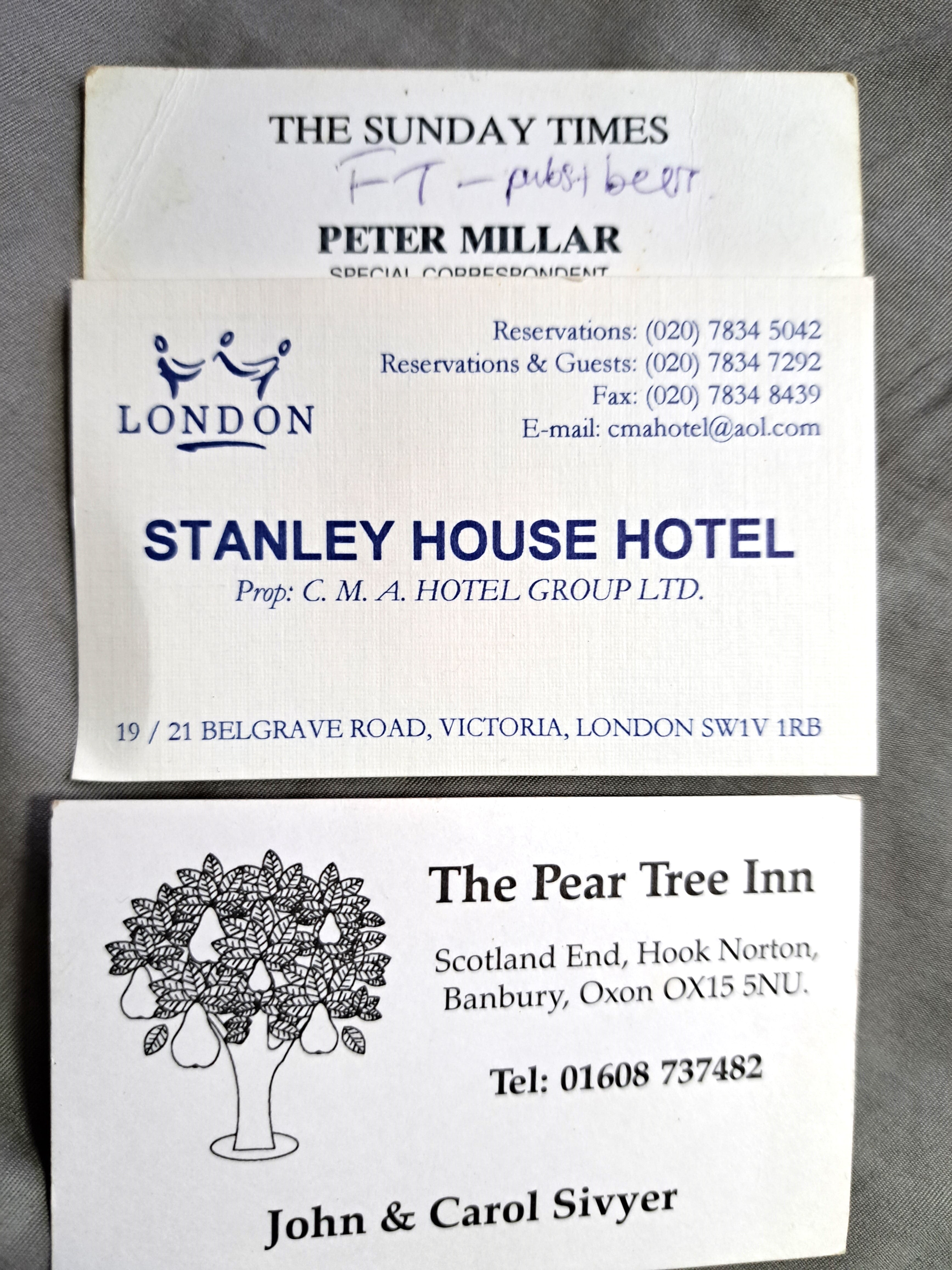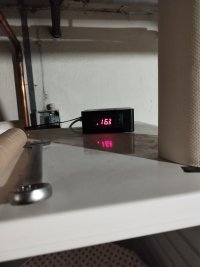I always find these histories exciting, because there are so many contradicting each other. For example there is this quote from the
UK brewery map:
In these cases, I'm always reminded of Darwin's version of the
Dunning-Kruger effect - "
Ignorance more frequently begets confidence than does knowledge."
Particularly when you see confident statements that show complete ignorance of how yeast work "*
is* 1469 West Yorkshire Ale / Omega OYL-014 British Ale VII". At best the stuff you get from yeast labs is a many-generations descendant from one strain of what is often a multistrain. But it's never identical - a familiar example is how Verdant took London Ale III and after a few years of repitching they had what Lallemand sell as Verdant IPA - it's similar but not the same.
Whereas you'll notice that when I talk about yeast there's always lots of "seems" and "it is claimed", if I make a statement of fact then I usually bring receipts - in this case
a professional brewer who went on a behind-the-scenes tour of Taylor's in 2018 with the Brewery History Society :
"
The brewhouse came from the wrong side of the Pennines, originally being from Oldham brewery....The yeast also came from Oldham brewery and they've been continuously re-pitching for 36 years."
Or you could trust a comment on a random map with no attribution. It has some nuggets of truth but I would take a lot of it with a pinch of salt It's quite plausible that 1469 came from Courage originally, genetics suggests it may well have come from the south, but who knows what the link with Taylor's is. And this is what the actual Taylor yeast looks like :
A good test of these things is 1318 - just look at the map's confident take "
Boddington's Brewery yeast strain, from the Strangeways Brewery in Manchester (which was demolished in 2004) is 1318 London Ale III / Omega OYL-011 British Ale V"
We know (if you trust Ron's transcription skills) that in its heyday in the 1970s
Boddies was getting apparent attenuation over 90% from a yeast they got from Tadcaster in 1941 after they were bombed (but that seems to have been a direct-ish replacement of the yeast they had been using since at least the 1920s). Does that sound like the attenuation of 1318, or that of a saison-family yeast that was historically common in northern England? Meanwhile one thing we know about
1318 is that it's one of the closest known relatives to 1098 - the archetypal Whitbread yeast.
It feels just a bit too much of a coincidence that Whitbread bought Boddies in 1989, and that in the run-up to Strangeways being closed they had
problems recreating Boddies at the Whitbread factory in South Wales. Cask Boddies was contracted out to Hyde's, who had such problems with the Strangeways yeast that they produced 42% less than target in FY06 (per p2 of their
annual report of 7 Feb 2007). That doesn't sound like the easy-going Whitbread yeast, which is popular precisely because it works under most conditions, it sounds like an "old" yeast that's evolved to work with one particular setup.
So despite the rumours that they changed the yeast, my suspicion is that they kept the old Tadcaster yeast, at least for cask, for as long as Strangeways was open. Given that a lot of the US yeast bank strains seem to originate among homebrewers in the 1990s, I wonder if Whitbread used their own yeast for some of the short-lived Boddies brand extensions at the height of its popularity in the 1990s - things like Boddies Export (which is the only survivor, labelled as Pub Ale in the US) which would explain how some people are convinced 1318 originated with Boddies, but genetically it's clearly a bog-standard Whitbread yeast.
Same goes for the "Fuller's" yeasts. Even the map acknowledges that its confidence may be misplaced "
Fuller's Brewery yeast strain, from the Griffin Brewery in Chiswick, London, is Wyeast 1968 London ESB / WLP002 English Ale / Omega OYL-016 British Ale VIII. But none of these, especially the Wyeast, really capture the flavour of Fuller's - some strong fruity notes missing."
Or to put it another way - it's impossible that Fuller's "is" "1968/WLP002" as it tastes nothing like them. Anyone who has actually drunk a decent pint of Fuller's will know about the distinctive orangey character of their yeast. And no, I'm not just making that up - both
the brewery and
a former head brewer acknowledge it :
"
Fuller’s yeast gives orange citrus, and toffee flavours to the beer (marmalade notes at discernible at higher A.B.V.)"
"
One constant of all the ales is the secret ‘house yeast’. ‘It has a very orange-y, marmalade-y flavour,’ says George. ‘It’s easy to pick up in ESB...’"
So any yeast that lacks that character cannot be the Fuller's yeast. Now it's possible that 1968 and 002 originated in Chiswick but have evolved to be blander in the course of being passed around before they ended up at a yeast company, it's also possible that a tube got mislabelled along the way. But what is certain is that they are not the Fuller's yeast, and one should be sceptical of any source that claims they are.
Anyway, rant over, now to go and see if I can pick up some of this year's Vintage....








